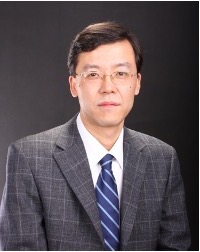Phase Field Simulation on γʹ Precipitate Evolution for Novel Cobalt-base Superalloy
Jun Zhang*, Jia Chen, Min Guo, Min Yang, Haijun Su, Lin Liu
State Key Laboratory of Solidification Processing,Northwestern Polytechnical University, Xi’an, 710072, P. R. China
ABSTRACT: The γʹ
precipitate strengthened cobalt-base alloys with high melting points, good
corrosion resistance, fatigue resistance and weldability, have the potential
for anticipated next generation superalloy. The phase field method (PFM)
considering the combined effect of multiple energy fields, provides an
effective choice for clarifying microstructure evolution processing and
mechanism. This paper simulates the γʹ evolution during the aging and creep
processes for the novel Co-base superalloy by using PFM with the microstructure
evolution model describing the elastic and plastic deformation behaviors. The
corresponding coarsening and creep mechanisms are analyzed from the perspective
of changes of energies and stress/strain fields.
(1) The
γ/γʹ evolution during isothermal aging is simulated by elastic phase field
model. The results show that γʹ precipitates evolve from sphere to cube aged at
900℃ while interconnect irregular γʹ precipitates are formed before transition
to cube when aging temperature is lowered. And polyhedral precipitates are
observed in system with high γʹ volume fraction. These irregular γʹ are caused
by the coalescence of adjacent precipitates. Moreover, the coarsening kinetics
is analyzed in systems with different γʹ volume fractions. It is found that the
coarsening rate of γʹ precipitates shows a positive dependence on γʹ volume
fraction, which is the synergistic effect between diffusion potential
difference between γ matrix and γʹ precipitate, edge-to-edge distance between
γʹ precipitates, and particle size distribution.
(2) The
elastoplastic phase field model further coupling with plastic deformation and
creep damage is proposed to study γ/γʹ evolution and deformation behavior
during the typical creep process. Under tensile creep at 900℃/275 MPa, cubic γʹ
precipitates coarsen along the direction parallel to stress axis, resulting in
regular P-type rafts during primary creep. Then the wavy rafts form due to the
deviation of γ/γʹ interface in the steady stage, and creep pores occur at γ/γʹ
interface during tertiary creep. The evolution of stress/strain fields indicates
these pores release the concentrated stress at interfaces, which makes the
dislocation glide again. The deflection of the γ/γʹ interface provides a
continuous slip path for the further movement of the dislocation, and thus the
creep rate increase significantly.
(3) Furthermore,
the double minimum creep behavior is studied. The dislocation slip in channel
intersections and dislocation multiplication in horizontal channel centers lead
to the first increase of creep rate.
Keywords: cobalt-base superalloy; γʹ precipitate; Phase field simulation; Aging; Creep

Professor, Senior Member of Chinese Mechanical Engineering Society, Member of National Steering Committee for Teaching in Higher Education Institutions. Mainly engaged in teaching and research on solidification theory and technology for advanced materials, such as superalloy, ceramics, semiconductor, etc. Over 350 published papers and 35 authorized patents. Winner of First Prize of National Teaching Award, First Prize of Science and Technology of Shaanxi Province, etc.